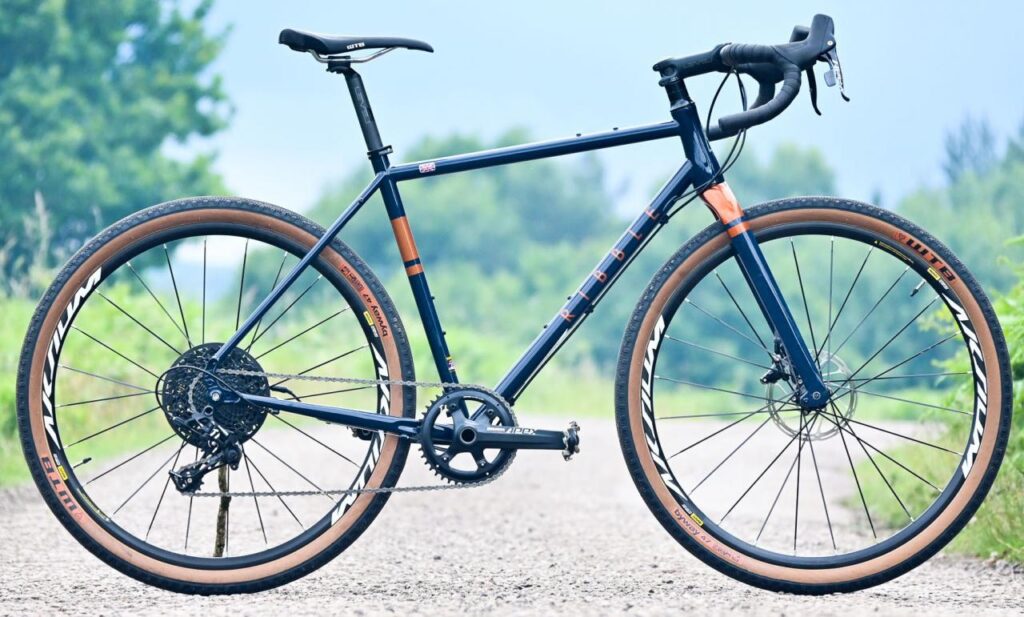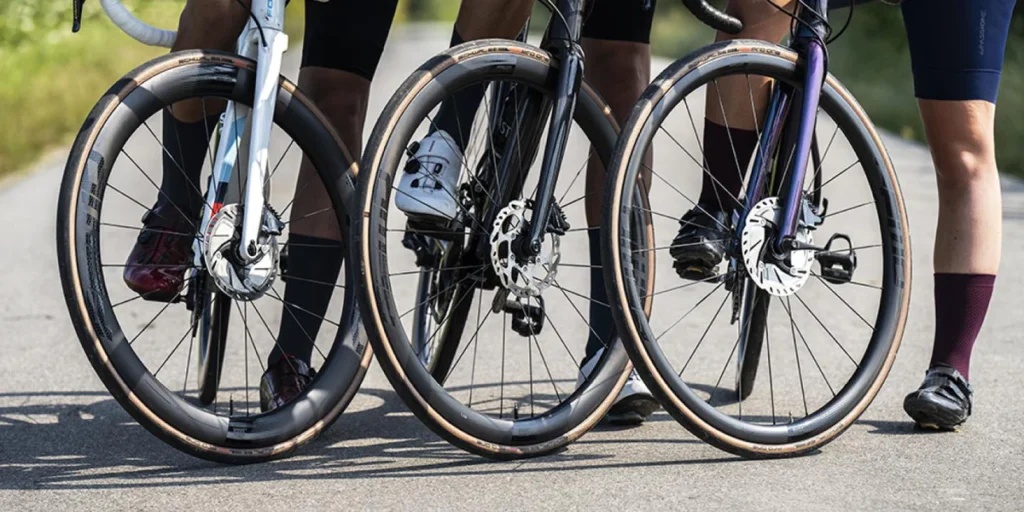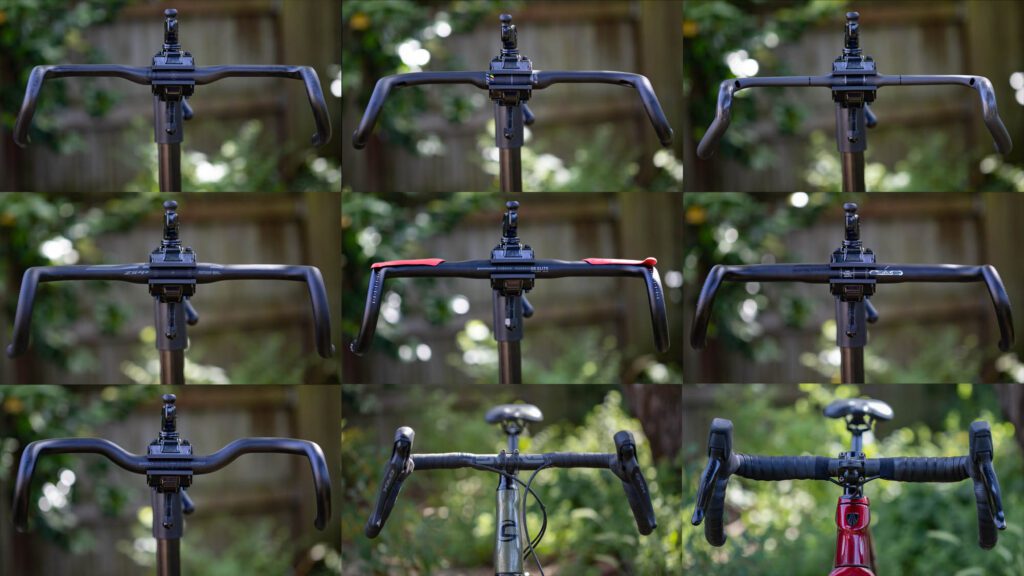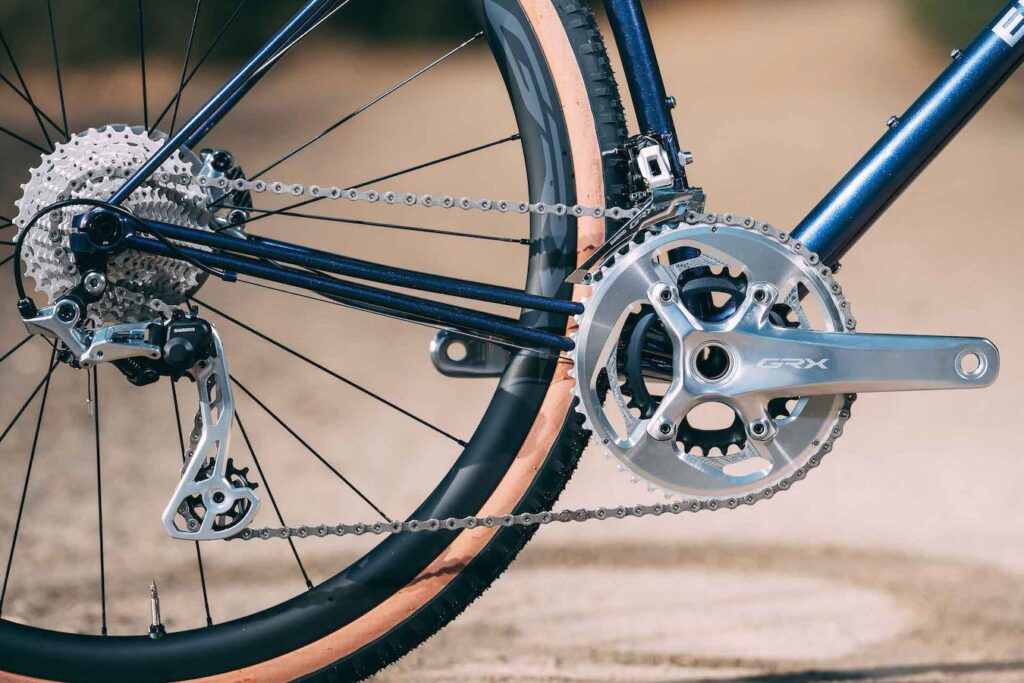


As the allure of gravel biking continues to grow, many road cyclists wonder “Can you turn a road bike into a gravel bike”. The answer is both exciting and practical in gravel bike conversion.
Read More: How To Make A Gravel Bike More Comfortable
Tire Transformation: Upgrading for Gravel Terrain



Read More: How To Make My Gravel Bike Faster
Enter the Gravel Tire
Gravel tires are purpose-built for rough, mixed surfaces. The key features of gravel tires to consider are:
- Tire Width:
Gravel tires are wider than road tires, typically ranging from 32mm to 45mm or more. This extra width provides stability and allows lower tire pressure for improved grip on loose surfaces.
- Casing and Puncture Protection:
Gravel tires often have reinforced casings and puncture protection layers to withstand the rigors of off-road riding.
Tubeless Consideration
Many gravel cyclists prefer tubeless setups. Tubeless tires can run at lower pressures, further enhancing traction and reducing the risk of pinch flats. Additionally, they can self-seal small punctures, keeping you rolling on your gravel adventures.
Tire Pressure Matters
Gravel riding often involves varying terrain, from smooth gravel roads to rough and rocky sections. Experiment with tire pressures to find the right balance between grip, comfort, and efficiency. Lower pressures provide more traction but may increase rolling resistance.
Brake Conversion: From Rim to Disc for Gravel Adventures



Gravel biking takes riders off the beaten path, introducing them to diverse terrains and challenging conditions.
Read More: How To Build A Gravel Bike(Step-by-Step Guide)
The Limitations of Rim Brakes
Rim brakes, commonly found on road bikes, rely on calipers that grip the wheel’s rim to provide stopping power.
- Wider Tire Clearance:
Gravel bikes can use larger tires, but rim brakes may not accommodate wider tires.
- Rim Wear:
Aggressive braking on rough terrain can accelerate rim wear, potentially compromising the integrity of your wheels.
The Advantages of Disc Brakes
Disc brakes, on the other hand, offer several advantages that make them ideal for gravel biking:
- All-Weather Performance:
Disc brakes perform consistently in all weather conditions, including rain, mud, and snow.
- Wider Tire harmony:
Disc brakes let you use wider, knobbier tires for better grip on gravel, thanks to their increased tyre clearance.
Conversion Process
Converting from rim to disc brakes is a significant upgrade that involves several key steps:
- Frame and Fork harmony:
Ensure your bike’s frame and fork have the necessary mounts for disc brake calipers. Some older road bikes may require alteration or may not be suitable for conversion.
- Brake Calipers:
Select the appropriate disc brake calipers (mechanical or hydraulic) and mount them securely on your bike. Ensure proper alignment for effective braking.
- Brake Levers:
Replace your current brake levers with compatible disc brake levers. Hydraulic disc brakes require hydraulic brake levers.
- Cabling and Hydraulics:
Ensure proper installation of the necessary cabling or hydraulic lines, routing and bleeding them for hydraulic systems.
Wheels for the Wild: Choosing the Right Wheelset



Read More: Why do mountain bikers wear baggy shorts
Understanding the Gravel Terrain
Before choosing a wheelset, consider the types of gravel roads you’ll be tackling most frequently. The key factors to keep in mind are:
- Tire Width harmony:
Ensure that the wheelset can accommodate the tire width you desire for your preferred gravel riding style. Wider tires offer better traction and control on rough terrain.
- Tubeless-Ready:
Tubeless rims and tires are common in gravel biking. They allow you to run lower tire pressures for improved grip and puncture resistance.
Consider Your Riding Style
Your choice of wheelset should align with your gravel riding style:
- Performance Riding:
If you’re seeking speed and agility on gravel, opt for a lightweight wheelset with streamlined features. Carbon rims may be a good choice for added stiffness and responsiveness.
- Technical Terrain:
For tackling rugged, technical trails, look for wheels with robust construction and excellent impact resistance.
Wheel Diameter
Gravel bikes typically come in two-wheel diameters: 700c and 650b (27.5 inches). Each has its advantages:
- 700c Wheels:
These are similar to standard road bike wheels, offering higher rolling speeds. They perform well on smoother gravel surfaces and for riders who prioritize speed.
- 650b Wheels:
These smaller wheels provide additional tire clearance and improved stability on rough and technical terrain. Many people often prefer them for their ability to tackle more challenging gravel routes.
Hub harmony
Consider the harmony of the wheelset’s hubs with your bike’s drivetrain. Ensure that the hub you choose is compatible with your cassette type, such as Shimano, SRAM, or Campagnolo. Additionally, make sure it also aligns with your axle standards, which could be quick-release or thru-axle.
Handlebar Swaps: Finding the Perfect Gravel Handlebars



The Importance of Handlebars
They are your primary point of contact with the bike and play a pivotal role in:
- Control:
The right handlebars provide stable and responsive steering, essential for navigating gravel’s ever-changing terrain.
- Comfort:
Handlebars affect your riding posture and comfort. The wrong choice can lead to discomfort on long rides.
- Flexibility:
Gravel biking encompasses a wide range of terrains, from smooth gravel roads to technical trails. Your handlebars should be versatile enough to handle this diversity.
Common Gravel Handlebar Types
Gravel bikers can choose different handlebars. Each type offers unique advantages and suits different riding styles:
- Drop Bars:
Bike drop bars have various hand positions for easier riding on smooth areas and better control on tough terrain.
- Flared Drop Bars:
These drop bars have wider drops, providing more stability and control on descents and technical terrain. They offer a compromise between traditional drop bars and flat bars.
- Flat Bars:
Widely used in mountain biking, flat bars offer an upright riding position and precise control. They are ideal for technical trails but may have limited hand positions.
- Aero Bars:
To improve fluid dynamics on long gravel rides, riders can add aero bars to drop bars. This will help them achieve a lower and more streamlined position.
Assessing Your Riding Style
Your gravel handlebar choice should align with your preferred riding style:
- Long-Distance Touring:
If you plan on covering significant distances, drop bars or flared drop bars provide multiple hand positions, reducing fatigue.
- Speed and fluid dynamics:
For faster riding on smooth gravel roads, riders can add aero bars or extensions to their drop bars.
Read More : ( Why don’t mountain bikes have kickstands? )
Gearing for Gravel: Optimizing Your Drivetrain



The Role of Gearing in Gravel Biking
Gearing plays a pivotal role in how efficiently and comfortably you navigate gravel terrains. Here’s what you need to consider:
- Climbing Power:
Gravel routes often feature challenging climbs. Having low enough gears allows you to tackle steep ascents without excessive effort.
- Top-End Speed:
For flatter or smoother sections, higher gears enable you to reach and maintain higher speeds.
- Terrain flexibility:
Gravel biking involves a mix of terrains, from smooth gravel roads to technical trails. Your gearing should be versatile enough to handle this diversity.
Drivetrain Components to Consider
To optimize your gravel drivetrain, you should focus on the following components:
- Cassette:
The cassette consists of multiple cogs at the rear wheel. Choose a cassette that provides a range of gears suitable for both climbing and maintaining speed on flat sections.
- Chainrings:
The chainrings on your crankset determine your bike’s gearing. Typically, gravel bikes come with two chainrings, however, some only feature a single one (1x configuration). The choice depends on your riding style and terrain.
- Front Derailleur:
Ensure that you adjust your front derailleur well to facilitate easy gear changes between the two chainrings.
- Rear Derailleur:
The rear derailleur shifts the chain between cogs on the cassette. Make sure it’s well-maintained and properly adjusted for precise shifting.
Finding the Right Gear Ratios
The ideal gear ratios depend on your fitness level, riding style, and the terrain you frequent. Consider these factors for adjusting the gears:
Gear range includes.
- 1x vs. 2x:
A 1x setup simplifies shifting but may have fewer gear options. A 2x setup offers a wider range of gears but with the complexity of front derailleur shifting.
- Cassette Range:
Choose a cassette with a wide range, such as 11-42 or 11-46 teeth, to provide low gears for climbing and high gears for speed.
- Chainring Sizes:
Experiment with different chainring sizes to find the right balance between climbing power and top-end speed. Common combinations include 46/30 for 2x setups or 40-42 teeth for 1x setups.
A good idea.
Gravel Accessories: Must-Have Additions for flexibility



Gravel biking is all about embracing adventure and flexibility.
Multi-Purpose Bags and Packs
One of the first considerations for gravel biking is storage. Multi-purpose bags and packs designed specifically for gravel riding offer versatile storage options. Look for:
- Frame Bags:
These fit within the bike’s triangle frame, providing space for tools, snacks, and other essentials.
- Saddle Bags:
Attach to your saddle and seat post, offering storage for spare tubes, tire levers, and more.
- Handlebar Bags:
These provide additional storage space at the front of your bike, keeping items easily accessible.
GPS Navigation
Gravel biking often takes you through remote areas with intricate trail networks. A GPS device or app with GPS can help you stay on track and discover new routes with confidence.
Multi-Tool and Repair Kit
A multi-tool with various wrenches, Allen keys, and chain tools is invaluable for on-the-go repairs and adjustments. Combine it with a basic repair kit containing spare tubes, tire levers, and a mini pump or CO2 inflator.
Lights and Visibility Gear
If you’re riding when it’s getting dark or in low-light conditions, make sure to use strong front and rear lights to stay visible and safe. Reflective clothing and accessories also enhance your presence on the road.
First Aid Kit
Safety is always first. Carry a simple first aid kit with bandages, wipes, and painkillers for small injuries or pain.
Chain Lube and Cleaning Kit
Maintaining your bike’s drivetrain is essential for smooth performance. A small bottle of chain lube and a cleaning kit can help you keep your bike running smoothly even in dusty or muddy conditions.
Conclusion:
Indeed, it is possible to convert a road bike into a gravel bike. You can change your road bike into a gravel bike by making some adjustments and additions.
FAQs:
Is it possible to utilize my road bicycle on gravel terrains?
You can use a road bicycle for gravel riding. However, experts recommend making changes to enhance its performance and durability on rough terrain.
What are the essential alterations to convert a road bike into a gravel bike?
The changes made to the bike include using wider tires for gravel. Additionally, we upgraded the bike to disc brakes for improved braking. Lastly, we adjusted the bike’s transmission to accommodate various terrains.
What are the costs associated with transforming a road bike into a gravel bike?
The cost of conversion varies depending on the extent of alterations and the quality of components you choose. The cost can vary from a few hundred to over a thousand dollars.
Are there any limitations to converting a road bike for gravel use?
Some road bike frames may have limited tire clearance, making it challenging to fit wider gravel tires. Furthermore, road bikes may not have optimized geometry for off-road comfort.



Welcome to Bikegenics, where passion meets performance! We are a leading online destination for all things related to mountain biking, dedicated to providing you with top-notch gear, expert advice, and an immersive community to fuel your two-wheeled adventures. With a commitment to excellence and a deep love for the sport, we strive to elevate your biking experience to new heights.
